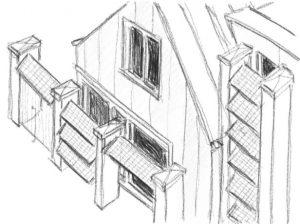From 2021, all new homes must comply with the nZEB (nearly Zero Energy Buildings) standard as an EU directive. This means that new homes being then completed must have a BER rating of A1 and at least a very good A2 rating. To use less than 25 Kw per metre square per annum for space heating will be the requirement for new homes.
This is not optional despite criticism or the seeking of an extension of time on these requirements becoming mandatory. This standard has been notified for almost ten years. Sufficient time for the collective consciousness to take stock, particularly for professionals. However, it also appears that ignorance of this requirements is common. The RIAI (Royal Institute of the Architects or Ireland) cites in the Code of Professional Conduct under article 1.15 “Whilst an architect’s primary responsibility is to his/her client(s), he/she should nevertheless have due regard to his/her wider responsibility to conserve and enhance the environment.” Due to this requirement, I do not claim to be an environmental specialist for to be so is a requirement of my profession. This requires architects to be familiar insofar as is possible with the requirements of legislation generally relating to the environment but also with the science relating to building and the environment. A detailed knowledge of emerging technologies, both passive and active, used in the built environment that can enhance the natural environment is therefore mandatory. It at least means that an architect should be familiar with technologies that have the least impact on the environment while realising clients dreams and aspirations.
How we live, travel and work all impact. Many of my colleagues cycle and use public transport as do I. I also use private motorised transport. I admit that I have a passionate interest in machines, but I also realise that I must reduce the amount of energy that I use in both my personal and professional life, as must we all. In our buildings low energy lights were introduced for the purpose of reducing the energy used. The results have in studies proven less effective than hoped. Our grandparents and parents were inclined to turn lights off, turn the emersion off for the purposes of saving energy, or perhaps saving money. They also spoke about living within our means. Our means today is too often based on our money. Notably, our capacity to pay. Environmental means are less inclined to be considered. It is not uncommon for lights to be left on, for TVs to be left on, for electrical emersions to be left on and for energy to be wasted. Hybrid cars are becoming common, many of these are high powered and in fact not very economical. One of the most economical cars that I ever owned was built in 1968 (NSU Prinz 4, tuned for economy, 60mpg +). While there are more economical cars today, there are still few on the road. We simply chose comfort and convenience rather than economy or sustainability. As we demand more luxury, sustainable developments have less beneficial impact. We chose to justify this by driving hybrids. La Ferrari, Lexus RX450h as examples of hybrids are neither economical nor sustainable. As many have become accustomed to spending a certain amount on fuel or energy, both in our transport and our homes, we are happy to spend this and can extend the use we put to these technologies not despite but because of their improving efficiency. There can be no significant benefit in doing this for the environment. Production of sustainable power needs to precede its use. Any increase in the use of even the most sustainable energy source is easily negated by excessive use. Data centres and electric vehicles are likely to demand huge amounts of energy. Rampant use of these technologies will require that we burn fossil fuels. Energy use needs to reduce.
Our buildings comfort will improve with the best sustainable technologies. It is vital that we choose actively that this be the case, it is nZEB legislation. To choose technologies that use 20% of the energy that we have used before while achieving the same result is admirable. In choosing less together with more sustainability, we can reduce the impact further.
Architect are required to assist in these choices while achieving client’s intentions. Client’s intentions are the primary goal of architects, but only with careful regard to the environment. According to the RIAI Code of Conduct, this is not an option. It is the remit of architects to make the process as effective as possible in every regard.

The control of unwanted solar gain using solar panels to generate energy in high-efficient modern buildings will reduce operating costs and energy use. Local and therefore more sustainable sourcing of this technology must also be considered.


2 Responses